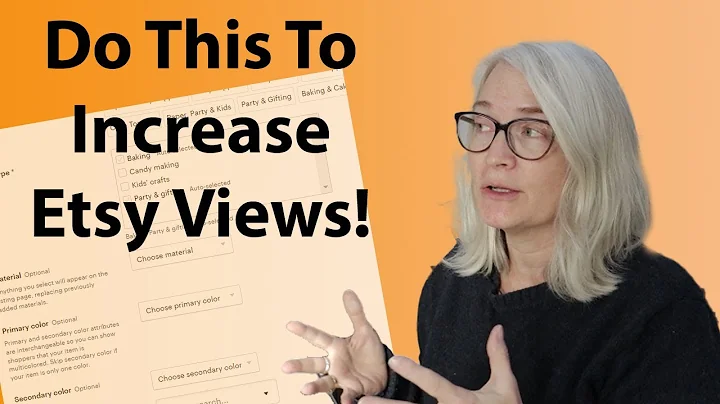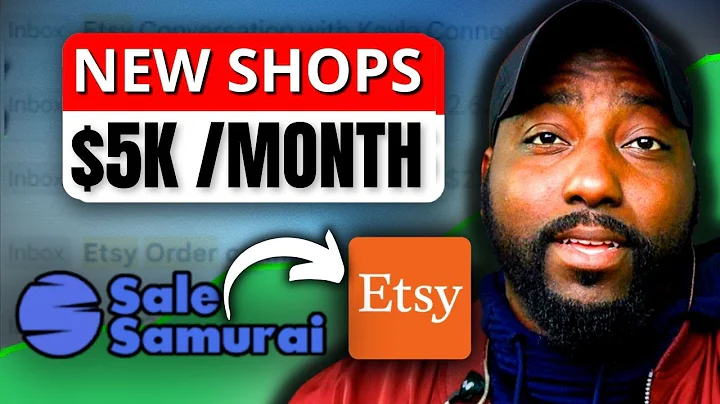Boost Your Rankings with SEO-Optimized Content
Table of Contents
- Introduction
- Importance of SEO in Content Writing
- Basics of SEO
- H1 Headings
- H2 Headings
- H3 Headings
- Creating SEO-Optimized Content
- Keyword Research
- Inclusion of Keywords
- Meta Descriptions and Title Tags
- Engaging the Reader
- Writing in a Conversational Style
- Using Personal Pronouns
- Keeping It Simple
- Using Rhetorical Questions
- Incorporating Analogies and Metaphors
- Perplexity and Burstiness in Content Writing
- Specificity and Context in Content Writing
- Pros and Cons of SEO Content Writing
How to Create SEO-Optimized Content for Better Search Engine Rankings
In the vast ocean of the internet, standing out among the competition can be challenging. As a content writer, it is crucial to create compelling and SEO-optimized content that grabs the attention of both readers and search engines. SEO (Search Engine Optimization) plays a vital role in ensuring your content reaches its intended audience and ranks higher in search engine results.
Importance of SEO in Content Writing
SEO is the process of optimizing your content to rank higher in search engine results pages (SERPs). When your content is SEO-optimized, it becomes easier for search engines like Google to understand what your content is about, which in turn improves your chances of appearing higher in relevant search results.
By incorporating SEO techniques into your content writing, you increase your visibility to potential readers or customers who are actively seeking information related to your topic. This, in turn, can drive more traffic to your website or blog, increasing your chances of converting visitors into customers or subscribers.
Basics of SEO
To create SEO-optimized content, it is essential to understand the basics of SEO. Here are some key elements to consider:
H1 Headings
The H1 heading is the most important heading on a page. It should accurately reflect the content of the page and contain relevant keywords. Using H1 headings helps search engines understand the main topic of the page and improves its visibility in search results.
H2 Headings
H2 headings are secondary headings that break up the content of a page into sections. They provide structure to your content and make it easier for readers to navigate. Including relevant keywords in your H2 headings can further enhance the SEO value of your content.
H3 Headings
H3 headings are subheadings that provide more specific details within a section of content. They help both readers and search engines understand the organization and hierarchy of your content. Utilizing keywords in H3 headings can improve the SEO visibility of your content.
Creating SEO-Optimized Content
Creating SEO-optimized content involves several key steps. Here's a step-by-step guide to help you get started:
1. Keyword Research
Keyword research is the foundation of effective SEO. It involves identifying the keywords and phrases your target audience uses when searching for content related to your topic. Tools like Google Keyword Planner, SEMrush, and Moz Keyword Explorer can help you find popular and relevant keywords.
2. Inclusion of Keywords
Once you have identified the keywords, strategically incorporate them into your content. Be sure to include them naturally in headings, subheadings, body text, and meta descriptions. However, avoid keyword stuffing, as it can negatively impact the readability and flow of your content.
3. Meta Descriptions and Title Tags
Optimize your meta descriptions and title tags to provide concise, keyword-rich summaries of your content. These elements appear in search engine result pages and play a crucial role in attracting potential readers to click on your content.
4. Engaging the Reader
To create SEO-optimized content, it's important to engage your readers. Writing in a conversational style and using personal pronouns helps establish a connection with your audience. Keeping your content simple and easy to understand ensures that your readers stay engaged and comprehend your message.
5. Using Rhetorical Questions
Incorporating rhetorical questions in your content can create an interactive experience for your readers. It encourages them to think and reflect, ultimately keeping them engaged and interested in your content.
6. Incorporating Analogies and Metaphors
Analogies and metaphors are powerful tools that can make complex ideas more accessible and relatable. By incorporating them into your content, you can enhance your readers' understanding and create memorable connections.
7. Perplexity and Burstiness in Content Writing
Perplexity refers to creating curiosity or a sense of puzzlement in your readers by presenting them with intriguing and insightful content. Burstiness, on the other hand, involves delivering information in short, quick bursts to maintain the reader's interest and attention.
8. Specificity and Context in Content Writing
In content writing, it is crucial to provide specific details and context to support your arguments or statements. Specificity adds credibility and helps readers trust the information you provide.
9. Pros and Cons of SEO Content Writing
Pros:
- Improved visibility in search engine results
- Increased organic traffic to your website or blog
- Higher chances of converting visitors into customers or subscribers
Cons:
- Requires ongoing research and optimization efforts
- Can be time-consuming and may require technical knowledge
- Results may take time to manifest
Highlights
- SEO-optimized content is crucial for higher search engine rankings and increased visibility.
- Incorporating keywords, headings, and meta descriptions improves the discoverability of your content.
- Engaging readers through conversational writing and interactive elements enhances their experience.
- Analogies and metaphors make complex ideas more relatable and memorable.
- Perplexity and burstiness create curiosity and maintain reader interest.
- Providing specific details and context builds credibility and trust.
Frequently Asked Questions
Q: Can I include affiliate links in my digital products on Etsy?
A: Including affiliate links in your digital products is generally allowed on Etsy. However, it is advisable to review Etsy's policies and guidelines to ensure compliance.
Q: How can I improve my conversion rate on Etsy?
A: To improve your conversion rate, focus on improving your listing photos, optimizing your product descriptions, and providing excellent customer service. Additionally, consider offering incentives such as freebies or coupons to encourage customers to make a purchase.
Q: How can I get more reviews for my Etsy shop?
A: To encourage customers to leave reviews, you can send a follow-up message after a purchase thanking them for their business and kindly requesting a review. You can also include a reminder to leave a review in your confirmation emails or packing materials.
Q: Is background removal a good idea for listing photos on Etsy?
A: Background removal can be useful for certain marketing graphics or images, but for listing photos on Etsy, it is generally better to have natural, professionally staged backgrounds. Avoid overly edited or altered photos, as they may appear less appealing to buyers.
Q: How can I stay consistent and organized with my Etsy shop?
A: To stay consistent and organized, consider time blocking, prioritizing tasks, and setting specific goals. Establishing a routine and maintaining clear communication with customers can also help you stay on track.
Q: Can I open multiple Etsy shops with the same IP address?
A: While it is possible to open multiple Etsy shops with the same IP address, it is recommended to use different email addresses for each shop to ensure proper organization and management. However, it is advisable to review Etsy's current policies and guidelines for specific requirements.












